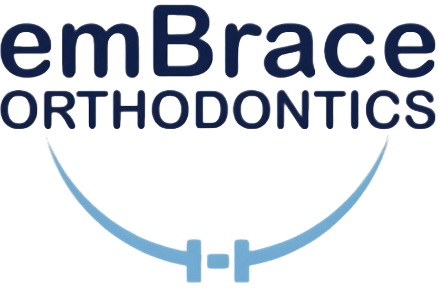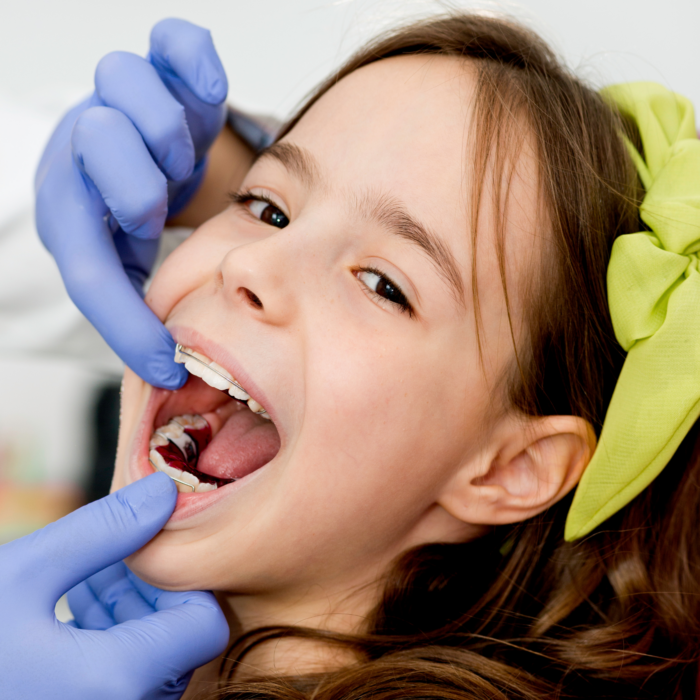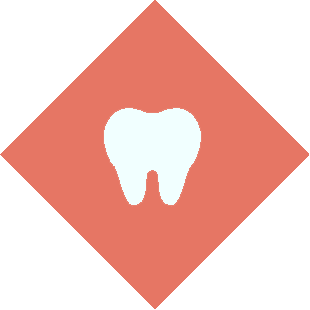Orthodontic Appliances
Orthodontic appliances are key components in guiding teeth and jaw development. While most people are familiar with braces, appliances go beyond alignment. They create space, influence growth, correct bite issues, and help maintain results long after braces come off.
Embrace Orthodontics offers a full range of orthodontic appliances for both children and adults. Each appliance serves a specific function and plays a direct role in long-term oral health and facial balance.
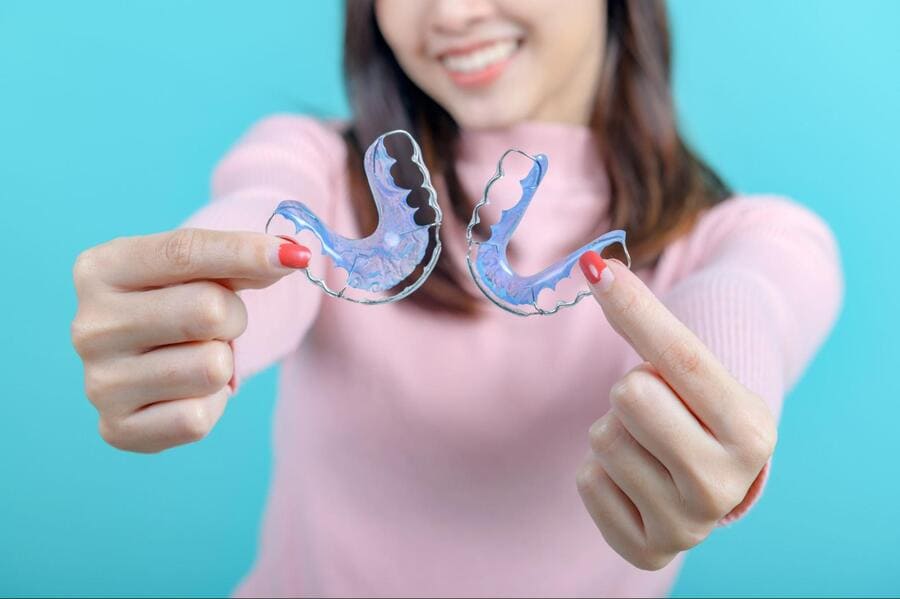
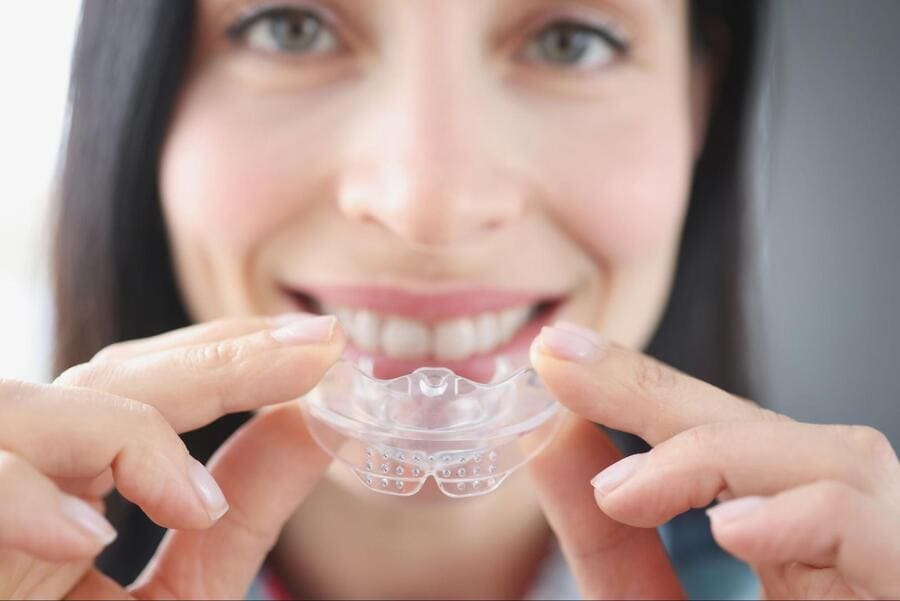
Why Orthodontic Appliances Matter
Tooth and jaw development does not always follow a perfect path. Appliances are often used before, during, or after braces to support movement, guide jaw growth, and ensure lasting alignment. They solve issues that braces alone cannot address and often reduce the need for more invasive procedures.
Some appliances are fixed in place while others are removable. They may be used for a few months or become part of a longer treatment plan. Every appliance is custom-made to fit the patient’s mouth and treatment goals.
Types of Orthodontic Appliances and Their Functions
Once braces or aligners have completed their job, teeth naturally want to shift back. Retainers stop this movement. These appliances are custom-made to hold teeth in their corrected positions.
There are two main types:
- Clear Retainers: Made of transparent plastic and fit snugly over teeth. These are nearly invisible and often preferred by teens and adults.
- Hawley Retainers: Made of acrylic and wires. These are durable, adjustable, and easier to repair if damaged.
Most patients wear retainers full-time right after treatment, then gradually transition to nighttime use. Consistent wear protects the results and prevents the need for retreatment.
A narrow upper jaw can cause crowding, crossbites, or impacted teeth. Palatal expanders gently widen the upper arch to make room for proper tooth eruption and alignment.
These devices are most effective in children, especially under age 15, when the jawbones are still flexible. The appliance fits on the upper molars and includes a center screw that gets adjusted gradually over time.
Expansion helps teeth fit comfortably, improves breathing in some cases, and reduces the chance of extractions later.
Headgear is used in growing patients with major bite problems, especially when the upper jaw grows too far forward. This appliance attaches to metal bands on the back teeth and is held in place with straps around the neck or head.
Headgear helps:
- Slow upper jaw growth
- Move molars into better positions
- Correct deep overbites
The device is typically worn at home or while sleeping. Consistent use allows the bones to adjust as they grow.
Spacers, also known as separators, are small rubber or metal rings placed between the back teeth. They create enough room for orthodontic bands that will later be placed during the start of braces treatment.
Spacers are usually worn for about a week. Patients may feel pressure or mild discomfort while they work, but they are temporary and removed before braces are placed.
Some patients push their tongue against their teeth when swallowing or speaking. This habit is called tongue thrusting and may lead to an open bite or spacing issues.
Tongue spurs are small metal prongs attached behind the front teeth. They remind the tongue to stay in a proper position. Over time, this helps break the habit and prevents further alignment problems.
When a child loses a baby tooth too early, the surrounding teeth may start to shift into the empty space. This leads to crowding and misalignment as permanent teeth try to erupt.
Space maintainers are small metal or plastic appliances that hold space open until the adult tooth is ready to come in. This keeps the rest of the teeth in line and helps avoid bigger orthodontic problems later.
When Are Orthodontic Appliances Needed?
Orthodontic appliances are used for different reasons depending on the age of the patient, stage of development, and treatment goals. Common reasons for appliance use include:
- Guiding jaw growth
- Creating room for incoming teeth
- Correcting bite alignment
- Preparing the mouth for braces
- Holding space after tooth loss
- Maintaining results after orthodontic treatment
Appliances are often recommended as part of Phase 1 pediatric orthodontics. In other cases, they support ongoing treatment or help preserve results after braces or Invisalign.
Why Choose Embrace Orthodontics for Appliances and Care
Dr. Anas Athar leads Embrace Orthodontics with advanced training in both orthodontics and oral and maxillofacial radiology. His diagnostic precision and clinical experience allow him to design treatment plans that solve the cause of alignment problems, not just the symptoms.
Families throughout Dallas, Fort Worth, Irving, and Balch Springs trust Embrace Orthodontics for quality care and patient-focused service.
We offer traditional braces, Invisalign, early intervention, and appliances under one roof. Each treatment plan is built with long-term health and function in mind.
Our office works with most major insurance plans to keep care affordable. Medicaid and CHIP are also accepted for eligible patients.
Flexible monthly payments make it easier to manage treatment costs. Our team will help you find a plan that works with your budget.
We speak English, Spanish, and Arabic. Our goal is to make every patient feel comfortable and understood.
With four offices in Dallas, Fort Worth, Irving, and Balch Springs, families have access to quality care close to home.
Book a Free Consultation Today
Orthodontic appliances play a key role in shaping confident smiles. Embrace Orthodontics offers early evaluations to see if your child or teen needs one of these important devices. Adults may also benefit from certain appliances based on their treatment plan.
Call Embrace Orthodontics to schedule a consultation at any of our four locations. Our team will take diagnostic records, review your needs, and explain all appliance options clearly.
Let us help you or your child build a healthy smile that lasts.
